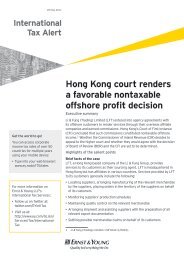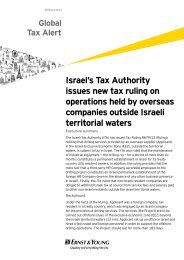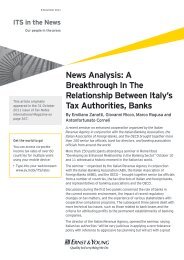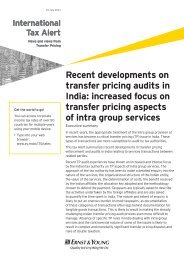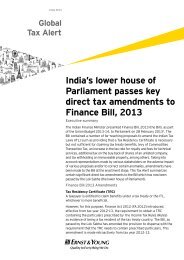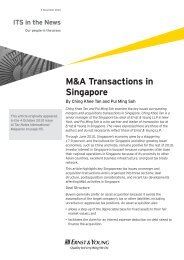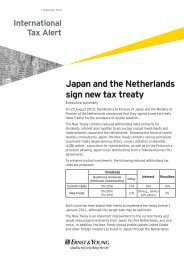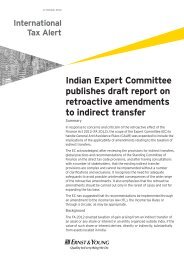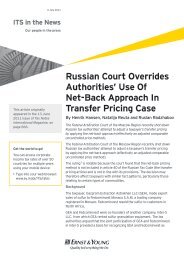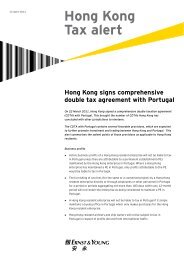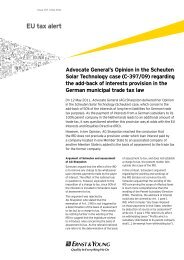(GST) compliance obligations (pdf, 5.62 MB) - Ernst & Young T ...
(GST) compliance obligations (pdf, 5.62 MB) - Ernst & Young T ...
(GST) compliance obligations (pdf, 5.62 MB) - Ernst & Young T ...
Create successful ePaper yourself
Turn your PDF publications into a flip-book with our unique Google optimized e-Paper software.
A working sales invoice<br />
A simple and telling example of the<br />
problem faced by MNEs in negotiating<br />
detailed national rules is the sales invoice.<br />
As the basic business document that<br />
accompanies all business-to-business<br />
(B2B) transactions, invoices play a vital<br />
role in accurate financial reporting. MNEs<br />
themselves want to ensure that their<br />
invoices report accurately what has been<br />
sold to whom, when and where, and the<br />
amount due.<br />
Surely this is an area where taxpayers’<br />
and tax administrations’ interests<br />
coincide? If vendors, purchasers and<br />
tax collectors need the same basic<br />
information, MNEs could lighten their<br />
day-to-day <strong>compliance</strong> burden by<br />
adopting standardized invoice formats<br />
across different countries. But the reality<br />
is far less rosy. In our survey of the VAT<br />
invoicing requirements in 90 countries,<br />
we found widely differing national<br />
requirements that make it difficult to use<br />
a standard sales invoice document and a<br />
standardized invoicing process.<br />
One of the most onerous local<br />
requirements for MNEs that use shared<br />
service centers is the need to issue an<br />
invoice in the local language and in the<br />
local currency. Another factor adding<br />
to complexity is the lack of standard<br />
requirements. Invoicing deadlines<br />
around the world, for example, range<br />
from no days to one year after the time<br />
of supply (see figure 1). In 19 of the<br />
countries we surveyed, the taxpayer<br />
must use an invoice generated by the tax<br />
administration or pre-approved by it in<br />
some way, and in 5 countries, invoices<br />
must be issued on colored paper. In 31<br />
countries, it is obligatory or advisable to<br />
sign invoices before they are issued; in 24<br />
countries, it is obligatory or advisable for<br />
invoices to bear the company stamp; in<br />
50 countries, it is obligatory or advisable<br />
to add legal language if no VAT is charged<br />
(e.g., citing the relevant legislation); and<br />
in 57 countries, an exemption certificate<br />
is advisable or required from a customer<br />
who requests VAT exemption based on its<br />
status.<br />
The result of these wide variations, in<br />
practice, is that it is virtually impossible<br />
for a global company to design something<br />
as fundamental to its day-to-day business<br />
operations as an invoice that works all<br />
over the world.<br />
VAT and <strong>GST</strong>: multiple burdens for multinational companies<br />
18



